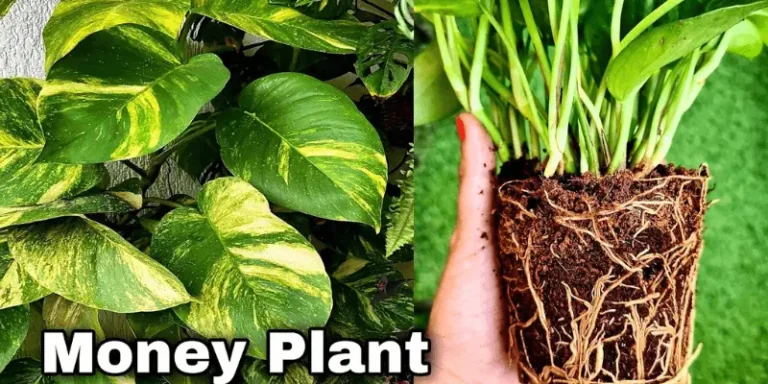Chinese Money Plant- A complete guide
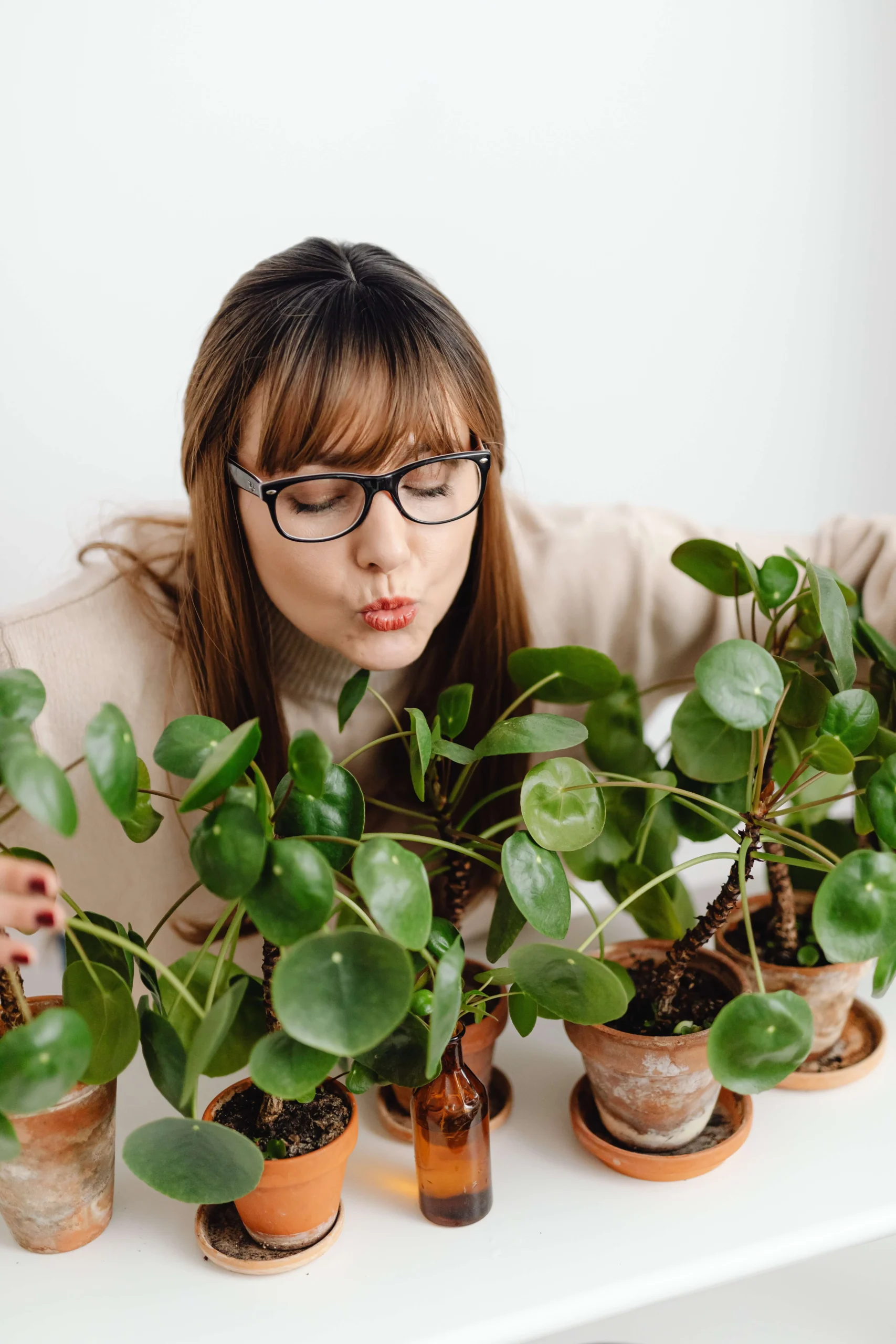
INTRODUCTION
The fascination surrounding the Pilea peperomioides plant is twofold. Firstly, its allure lies in its unique aesthetic and growth pattern. The Pilea peperomioides, commonly known as the Chinese Money Plant, features round, coin-like leaves that sprout along delicate, elongated stems, creating a captivating visual arrangement that appeals to plant enthusiasts and interior decorators alike. Secondly, exploring the folklore linked to its name adds another layer of intrigue. The plant’s moniker, “Chinese Money Plant,” stems from a tale of a Norwegian missionary who propagated the plant from a single cutting he received in the 1940s, likening its proliferating nature to a fruitful source of income. Unveiling this backstory not only enhances the plant’s charisma but also underscores the profound connections between nature, culture, and human imagination.
The Origin and Significance
Delving into the origins of the Pilea peperomioides reveals its Chinese heritage, adding a layer of cultural significance to its appeal. Native to the Yunnan province in China, this plant, also known as the Chinese Money Plant, has a rich history intertwined with its country of origin. Beyond its geographic roots, the plant holds symbolic importance in Feng Shui, a Chinese practice focused on harmonizing individuals with their surroundings. In Feng Shui, the round, coin-like leaves of the Pilea resemble prosperity and good fortune, aligning with the plant’s name and its representation of wealth. Incorporating this plant into living spaces not only brings a touch of nature indoors but also embodies a meaningful connection to ancient cultural beliefs and practices associated with attracting positivity and financial well-being.
Plant Characteristics
The Unique Coin-Like Leaves
The most distinguishing feature of the Chinese Money Plant is its distinctively round, flat leaves that closely resemble coins. These leaves, often referred to as pancake or UFO-shaped, are attached to delicate stems that emerge from the center of the plant. The glossy green surface of the leaves adds to their aesthetic appeal, making the plant a delightful sight to behold.
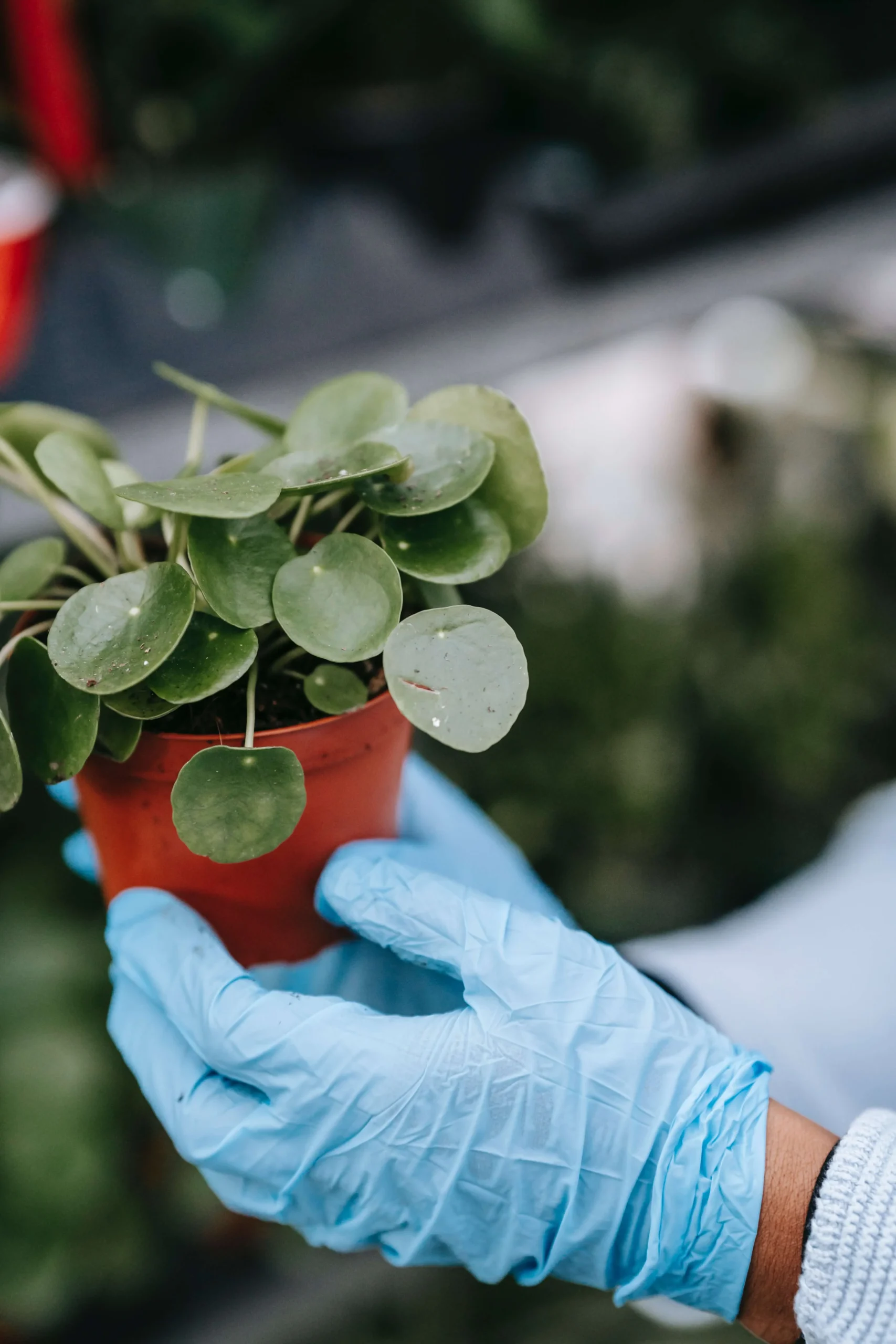
Growth Pattern and Structure
Beyond its leaves, the Chinese Money Plant boasts a captivating growth pattern that contributes to its popularity. The plant tends to grow in a circular, bush-like manner, with new leaves unfurling from the center and the older ones gracefully arching outward. This growth habit gives the plant a visually pleasing symmetry that adds a touch of elegance to any room it graces.
Intriguing Perforations in the Leaves
One of the Chinese Money Plant’s most remarkable features is the presence of intricate perforations in its leaves. These holes, known as fenestrations, are not only visually intriguing but also serve a functional purpose. They allow the plant to effectively capture and direct sunlight to all parts of its leaves, ensuring efficient photosynthesis and optimal growth.
Propagation and Care
Why Propagate Chinese Money Plants?
Propagation allows you to multiply your plant collection without spending a fortune. It’s also an opportunity to rejuvenate a leggy or mature plant, encouraging new growth and maintaining its vitality.
Getting Started with Propagation
Before you start the propagation process, gather the necessary tools. You’ll need a pair of clean, sharp scissors or pruning shears, a suitable potting mix, containers for water propagation, and small pots if you’re opting for soil propagation.
Propagation Methods
There are several methods for propagating the Chinese Money Plant, each with its advantages. Water propagation is a popular choice for beginners, while soil propagation offers a direct transition to the pot.
Water Propagation
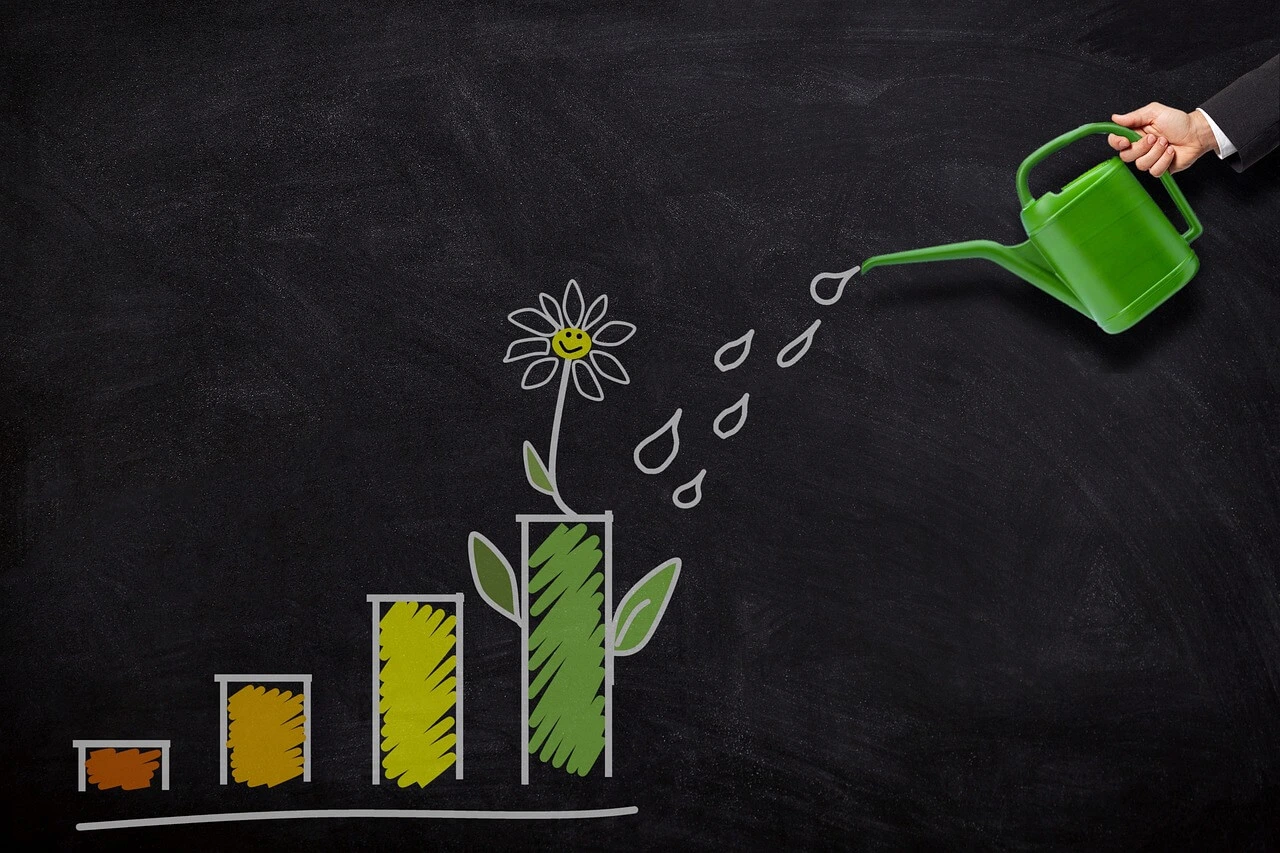
- Take a healthy cutting with at least one leaf node.
- Place the cutting in a container with water, ensuring the node is submerged.
- Keep the container in bright, indirect light and change the water regularly.
- Once roots are a few inches long, transplant the cutting into soil.
Soil Propagation
- Take a cutting as mentioned above.
- Dip the cut end in rooting hormone and plant it directly into moist potting mix.
- Place the pot in a warm and bright location.
- Keep the soil consistently moist and watch for new growth.
Offsets Propagation
- Gently remove offsets, which are small plants that grow at the base of the parent plant.
- Plant the offsets in separate pots with well-draining soil.
- Care for them as you would for mature Chinese Money Plants.
Essential Tools for Propagation
Having the right tools ensures a smooth propagation process. Make sure you have sharp scissors, clean containers, a rooting hormone (if desired), suitable potting mix, and small pots for transplanting.
Step-by-Step Propagation Guide
Selecting a Healthy Parent Plant

Begin with a healthy parent plant that shows no signs of disease or stress. This ensures that your propagated plants start on the right foot.
Taking Cuttings
Select a stem with several leaves and a leaf node. This node is crucial for root development.
Preparing Cuttings for Propagation
Remove the lower leaves to expose the leaf node. If you’re using water propagation, submerge the node in water. For soil propagation, apply rooting hormone and plant it directly.
Rooting in Water
Place the cutting in a container with water, allowing it to develop roots. Change the water every few days to prevent stagnation.
Planting in Soil
Once the roots are a few inches long, carefully transplant the cutting into a small pot with well-draining soil.
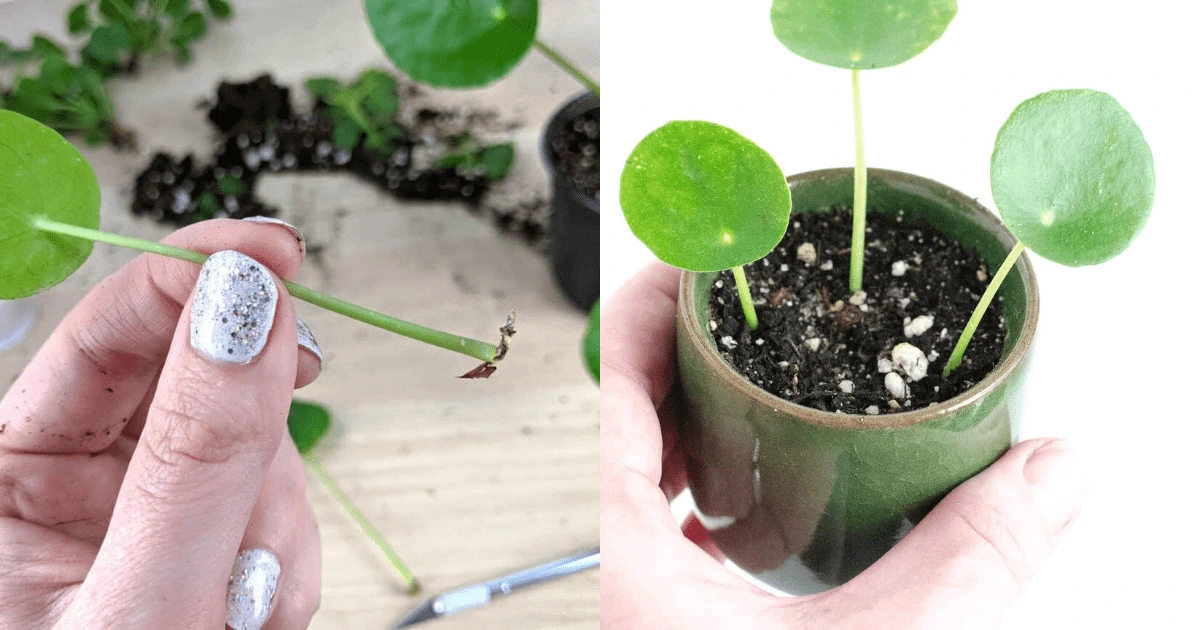
Caring for Newly Propagated Plants
Provide bright, indirect light, and keep the soil consistently moist but not soggy. Monitor for new growth, indicating successful propagation.
Common Mistakes to Avoid
Avoid overwatering, using poor-quality potting mix, or placing the newly propagated plants in direct sunlight. These mistakes can hinder the propagation process.
Troubleshooting Propagation Issues
If your propagated plants aren’t thriving, check for root rot, inadequate lighting, or pests. Adjust the care regimen accordingly.
Care
Understanding the Chinese Money Plant
Before diving into the care specifics, it’s beneficial to understand the plant itself. The Chinese Money Plant boasts round, coin-like leaves on delicate stems, making it a visual treat for any indoor space. It’s known for being relatively adaptable and can thrive when given the right conditions.
Light Requirements
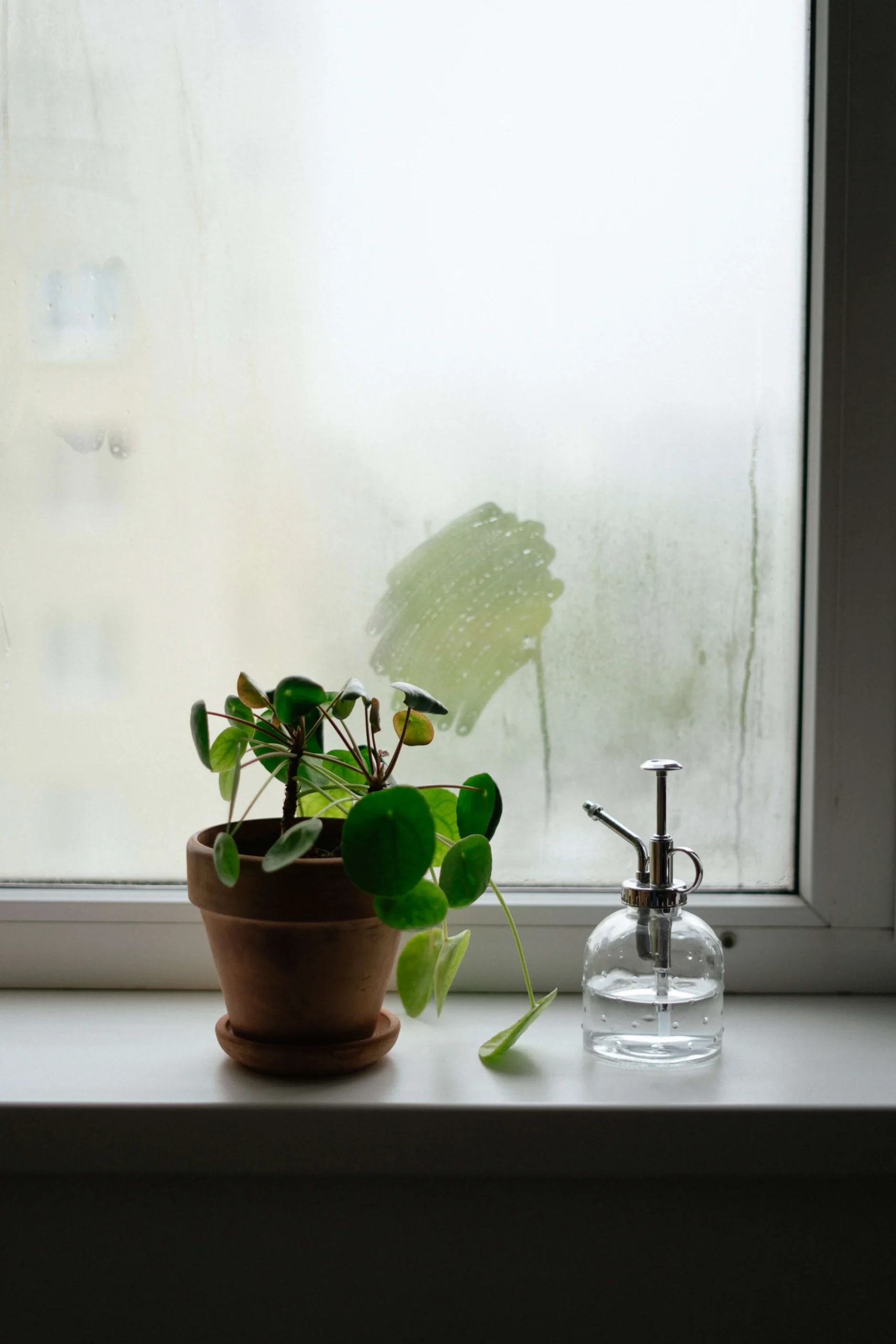
Chinese Money Plants thrive in bright, indirect light. While they can tolerate some periods of direct sunlight, it’s best to shield them from harsh afternoon sun to prevent leaf scorch. Placing your plant near a north or east-facing window is often ideal. If you notice the leaves leaning towards the light source, rotate the plant occasionally to promote even growth.
Watering Guidelines
Moderation is key when it comes to watering your Chinese Money Plant. Allow the top inch of the soil to dry out between waterings. Overwatering can lead to root rot, so it’s better to underwater than to drown the plant. Always use a well-draining potting mix to prevent waterlogging.
Choosing the Right Soil
A well-draining, lightweight potting mix is essential for your Chinese Money Plant’s success. A mix that includes perlite, peat moss, and other organic matter provides the ideal structure for proper root development. Avoid heavy soils that retain excess moisture.
Temperature and Humidity Considerations
Maintain a consistent room temperature for your Chinese Money Plant, ideally between 65°F to 75°F (18°C to 24°C). These plants thrive in average household humidity, but if you notice the edges of the leaves turning brown, it might indicate that the air is too dry. Consider misting the plant or using a humidity tray to boost moisture levels.
Fertilizing Your Chinese Money Plant
During the growing season (spring and summer), feed your Chinese Money Plant with a balanced, water-soluble fertilizer every 4-6 weeks. Dilute the fertilizer to half the recommended strength to avoid overfeeding. In the dormant season, reduce or halt fertilization.
Pruning and Maintenance
Regularly remove any yellowing or dead leaves to promote new growth. Pinching off the tips of the plant’s main stems can encourage branching, resulting in a bushier appearance. Pruning also helps the plant allocate energy to healthy growth.
Repotting Your Plant

Chinese Money Plants appreciate being slightly root-bound, so you don’t need to repot them frequently. However, if you notice the plant becoming top-heavy or outgrowing its current container, consider repotting it in a slightly larger pot with fresh potting mix.
Dealing with Common Issues
Yellowing leaves can indicate overwatering, while brown tips may signal underwatering or low humidity. Watch out for pests like spider mites and mealybugs, especially in dry conditions. Use insecticidal soap or neem oil to treat infestations.
Propagation for Future Growth
The Chinese Money Plant is relatively easy to propagate. Take stem cuttings with at least one leaf node and root them in water or soil. This allows you to expand your plant collection and share the joy of this unique plant with others.
Decorative Delight: Styling with the Chinese Money Plant
Introducing a touch of nature into your living space not only brings a breath of fresh air but also adds a unique charm that only plants can provide. The Chinese Money Plant (Pilea peperomioides), with its distinctive coin-like leaves and captivating growth pattern, is not just a plant; it’s a decorative delight that effortlessly enhances any interior. In this section, we’ll explore creative ways to incorporate the Chinese Money Plant into your interior design and create stunning DIY plant displays and arrangements.
Integrating the Plant into Your Interior Design

The Chinese Money Plant’s elegant yet whimsical appearance makes it a versatile addition to various interior design styles. Here are a few ways to seamlessly incorporate this green gem into your living space:
1. Minimalist Elegance: The plant’s simple yet intriguing foliage complements minimalist design, adding a touch of nature without overwhelming the space.
2. Boho Chic: The Chinese Money Plant’s unique leaves can complement the eclectic, vibrant atmosphere of boho-chic interiors, creating an interesting contrast with woven textures and bold colors.
3. Scandinavian Serenity: Its clean lines and unassuming beauty make it a natural fit for Scandinavian interiors, enhancing the cozy and serene ambiance.
4. Modern Sophistication: In contemporary spaces, the Chinese Money Plant can serve as a stylish focal point, adding a refreshing burst of green to clean lines and sleek surfaces.
5. Retro Revival: Embrace nostalgia by pairing the plant with retro-inspired décor elements, creating a harmonious blend of past and present.
DIY Plant Displays and Arrangements

Creating captivating displays with your Chinese Money Plant is a rewarding endeavor that allows you to showcase its unique features. Here are a few creative ideas to get you started:
1. Glass Terrarium: Place your Chinese Money Plant in a clear glass terrarium to create an enchanting miniature ecosystem. Add decorative pebbles or stones to the base for an extra touch of elegance.
2. Hanging Planters: Elevate your interior by suspending your plant in hanging planters. This not only saves space but also adds a dynamic visual element to your décor.
3. Vintage Vessels: Repurpose vintage containers like teacups, tins, or ceramic pots as charming plant holders. The contrast between the classic vessel and the modern plant creates an eye-catching display.
4. Plant Wall: Arrange multiple Chinese Money Plants on a wall-mounted shelf or frame to create a living work of art that brings a breath of nature into your home.
5. Mixed Plant Arrangements: Combine your Chinese Money Plant with other indoor plants to create visually appealing arrangements. Mix textures, shapes, and shades for a delightful contrast.
Common Challenges and Solutions
While the Chinese Money Plant (Pilea peperomioides) is known for its resilience and adaptability, like any plant, it can face its fair share of challenges. From unwanted pests to potential diseases, understanding how to identify and address these issues is essential for maintaining the health and vitality of your cherished plant. In this section, we’ll explore common challenges that Chinese Money Plant owners may encounter and offer practical solutions to overcome them.
Pest Prevention and Management
Identifying Common Pests: Vigilance is key when it comes to identifying pests that can affect your Chinese Money Plant. Common culprits include spider mites, aphids, and mealybugs. Keep an eye out for tiny insects on the leaves, stems, and soil, as well as signs of damage like discolored or curling leaves.
Natural and Chemical Solutions: To tackle pest infestations, consider both natural and chemical solutions. For a more eco-friendly approach, try using neem oil, insecticidal soap, or a mixture of water and mild dish soap to create a homemade spray. Be sure to apply the solution thoroughly, including the undersides of leaves where pests often hide.
Disease Concerns
Recognizing Signs of Disease: While Chinese Money Plants are generally resilient, they can still fall victim to diseases such as root rot and fungal infections. Look for signs like wilting leaves, brown spots, or mold growth on the soil’s surface.

Preventive Measures: Preventing disease starts with providing optimal care. Ensure your plant is in well-draining soil and that its pot has proper drainage holes. Avoid overwatering, as soggy soil can create conditions favorable to root rot. If you notice signs of disease, promptly trim affected areas and adjust your watering routine.
Mythbusting and Realities
The Chinese Money Plant (Pilea peperomioides) has gained a reputation for its captivating appearance and unique characteristics. However, as with any popular plant, there are often misconceptions and myths surrounding its care and growth. In this section, we’ll delve into some common misconceptions about the Chinese Money Plant and shed light on the realities, helping you foster a deeper understanding of this beloved green companion.
Dispelling Common Misconceptions
Myth: Chinese Money Plants Need Direct Sunlight to Thrive Reality: While Chinese Money Plants do require moderate light, direct sunlight can actually harm their delicate leaves. Opt for bright, indirect light, such as filtered sunlight or light from a north or east-facing window. Direct sunlight can lead to leaf scorching and hinder their growth.
Myth: Watering Chinese Money Plants Frequently is Beneficial Reality: Overwatering is a common mistake that can harm Chinese Money Plants. Allow the top inch of the soil to dry out before watering. Stick your finger into the soil; if it feels dry, it’s time to water. Remember that these plants prefer slightly dry conditions over consistently moist soil.
Myth: Chinese Money Plants Grow Rapidly and Require Constant Pruning Reality: While Chinese Money Plants can exhibit a captivating growth pattern, they are not rapid growers. You may not need to prune them frequently. Instead, focus on providing optimal care, including proper light, watering, and occasional fertilization, to encourage healthy growth.
Understanding the Growth Expectations
Reality: Slow and Steady Growth Chinese Money Plants are known for their slow and steady growth rate. While they can produce new leaves regularly, they won’t undergo rapid transformations. This characteristic adds to their charm and makes them a manageable choice for indoor spaces.
Reality: Seasonal Changes Like many plants, Chinese Money Plants may exhibit variations in growth throughout the year. They may slow down during the winter months and experience more active growth during spring and summer. Adjust your care routine accordingly to accommodate these natural shifts.
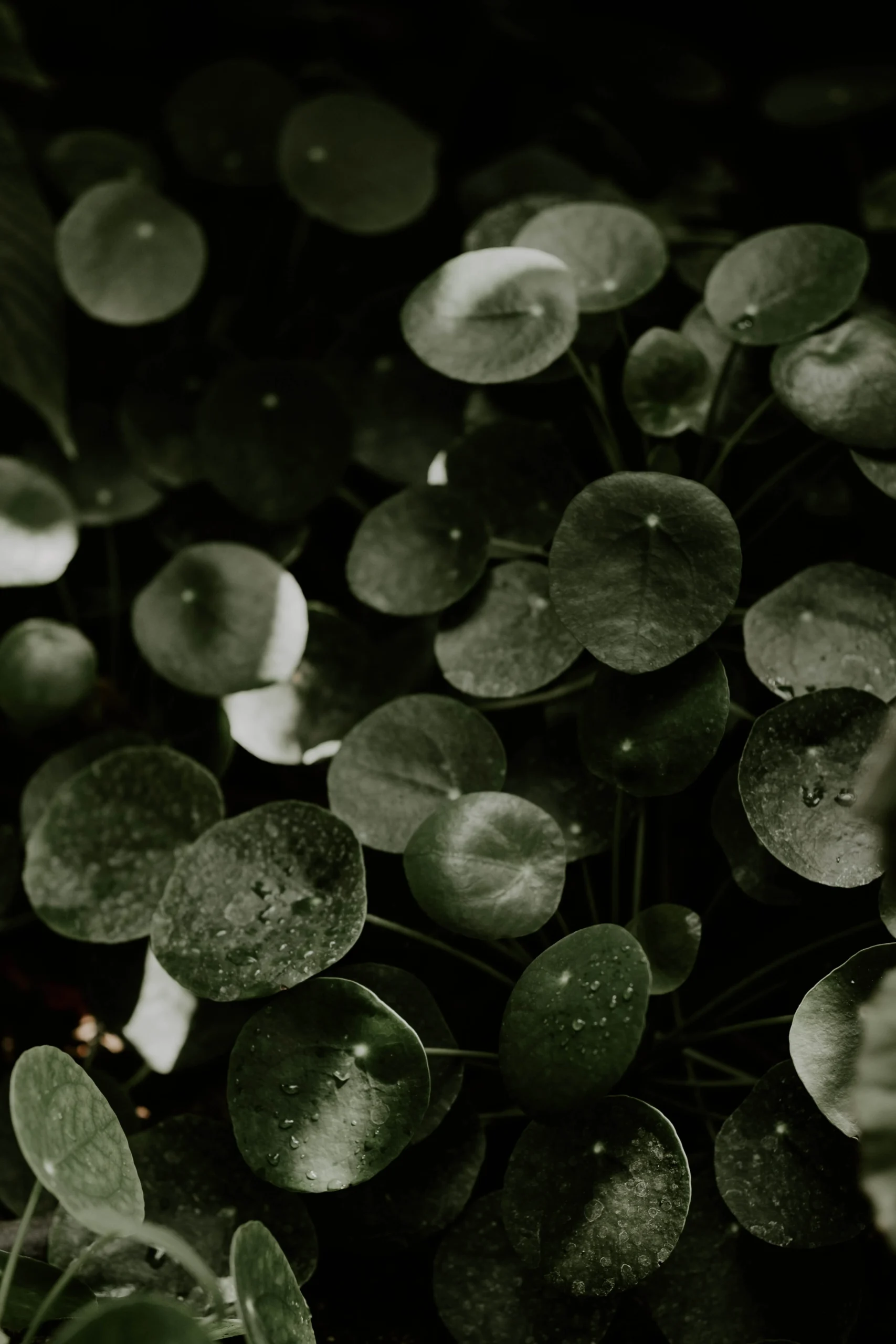
Reality: Patience is Key Cultivating a Chinese Money Plant requires patience and consistent care. Don’t expect overnight changes or drastic growth spurts. Instead, take pleasure in observing the gradual development of new leaves and the overall health of your plant.
Community and Sharing
The Chinese Money Plant (Pilea peperomioides) has earned a heartwarming moniker: the “Sharing Plant.” Beyond its captivating leaves and intriguing growth pattern, this plant is celebrated for its ability to foster a sense of community and connection among plant enthusiasts. In this section, we’ll explore the plant’s reputation as a symbol of sharing and the joy that comes from gifting and swapping Pilea plantlets.
The Plant’s Moniker as the “Sharing Plant”
The Chinese Money Plant’s reputation as the “Sharing Plant” is well-deserved. The term stems from the plant’s unique ability to produce offsets or baby plants around its base. These offsets can be gently separated from the parent plant and potted individually, giving plant enthusiasts the opportunity to share the beauty of the Chinese Money Plant with friends, family, and fellow plant lovers.
The Joy of Gifting and Swapping Pilea Plantlets
Gifting Plantlets: Sharing a Pilea plantlet with a friend or loved one is a delightful way to spread the joy of nurturing plants. The act of gifting a living plant holds a special significance, symbolizing growth, connection, and the bond between individuals. Whether it’s for a birthday, housewarming, or simply to brighten someone’s day, a Pilea plantlet is a thoughtful and meaningful present.
Swapping Plantlets: Plant enthusiasts often come together to swap Pilea plantlets as part of a thriving plant-sharing community. Plant swaps provide an opportunity for individuals to exchange not only plants but also knowledge and experiences. It’s a chance to connect with like-minded people, learn from one another, and expand your plant collection with new and exciting varieties.
Pilea in Modern Culture
In recent years, the Pilea plant, also known as the Chinese Money Plant (Pilea peperomioides), has transcended its role as a botanical delight and become a cultural phenomenon. From its prevalence on social media platforms to its influence on art, decor, and fashion, the Pilea has firmly established itself as a symbol of contemporary aesthetics. In this section, we’ll explore how the Pilea has woven itself into the fabric of modern culture.
Social Media’s Role in the Plant’s Popularity
Instagrammable Beauty: The Pilea’s striking appearance, characterized by its coin-like leaves and graceful growth habit, is inherently photogenic. As social media platforms like Instagram gained popularity, plant enthusiasts began sharing images of their Pilea plants, showcasing their unique charm. The hashtag #Pilea became a virtual gallery of vibrant greenery, encouraging more individuals to discover and appreciate the plant.
Community Building: Social media platforms have enabled plant lovers from around the world to connect and form communities centered around their shared passion for Pilea plants. Plant enthusiasts exchange tips, share growth updates, and celebrate the beauty of their Pilea companions. This digital camaraderie has contributed to the plant’s enduring popularity.
Pilea in Art, Decor, and Fashion
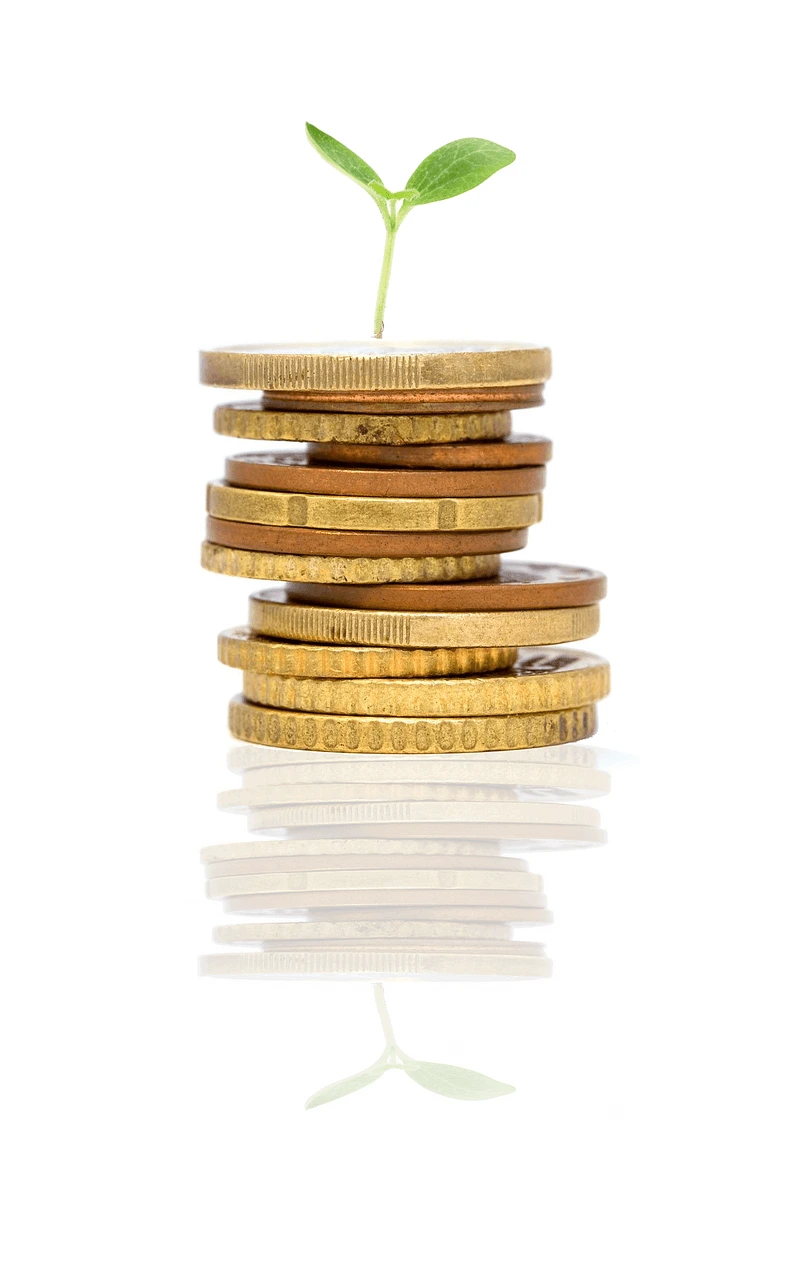
Artistic Inspirations: The Pilea’s elegant form and distinct leaves have inspired artists across various mediums. Paintings, illustrations, and digital art featuring the Pilea capture its essence and translate it into visual expressions. The plant’s gentle curves and lush green hues have found their way onto canvases and screens, infusing art with a touch of nature.
Decorative Appeal: As a living piece of decor, the Pilea effortlessly elevates interior spaces. Its minimalist aesthetic aligns with modern design sensibilities, making it a perfect addition to homes, offices, and even cafes. The Pilea’s presence brings a sense of tranquility and connection to the natural world, enhancing the ambiance of any setting.
Fashion Forward: The Pilea’s influence extends beyond art and decor, seeping into the realm of fashion. Clothing and accessories featuring Pilea motifs celebrate the plant’s beauty and connect wearers to the natural world. The plant’s presence in fashion is a reflection of the desire to harmonize personal style with the wonders of nature.
Benefits
Pilea peperomioides is more than just a charming houseplant with distinctive leaves; it also offers a range of benefits that contribute to both your living space and your well-being. From improving indoor air quality to promoting a sense of tranquility, let’s explore the various advantages of having a Chinese Money Plant in your home.
Air Purification and Oxygenation
Indoor air quality is a significant concern, and the Chinese Money Plant can help address it. Through the process of photosynthesis, the plant absorbs carbon dioxide and releases oxygen, thereby enhancing the air in your living space. Additionally, the plant’s leaves act as natural filters, capturing airborne pollutants and toxins, resulting in fresher and cleaner air.
Stress Reduction and Well-Being
Bringing nature indoors has been proven to have positive effects on mental well-being. The presence of the Chinese Money Plant can create a calming and soothing atmosphere that reduces stress and anxiety. Its simple yet elegant appearance and gentle growth pattern contribute to a sense of tranquility, making it a welcome addition to any room.
Connection to Nature
In today’s fast-paced world, maintaining a connection to nature can be challenging. The Chinese Money Plant offers a way to bridge that gap. By nurturing and caring for a living plant, you establish a direct link to the natural world. This connection can promote mindfulness, encourage a sense of responsibility, and foster an appreciation for the environment.
Decorative Enhancement

Beyond its benefits for well-being, the Chinese Money Plant also serves as a decorative enhancement for your interior. Its unique coin-like leaves and attractive growth habit make it an eye-catching addition to various spaces. Whether placed on a windowsill, a desk, or a shelf, the plant adds a touch of elegance and greenery to your decor.
Sharing and Community
The Chinese Money Plant is often referred to as the “Sharing Plant” due to its propensity to produce offsets that can be shared with friends and fellow plant enthusiasts. This characteristic not only encourages a sense of community but also spreads the joy of nurturing plants. Sharing Pilea plantlets can create connections and friendships centered around a shared love for greenery.
Conclusion
In the world of plants, few captivate the imagination quite like the Chinese Money Plant (Pilea peperomioides). With its coin-like leaves, enchanting growth pattern, and remarkable ability to foster connections, this botanical treasure has secured its place as both a natural wonder and a cultural symbol. As we conclude our journey through the world of the Chinese Money Plant, let’s reflect on its allure and mystique.
The Chinese Money Plant’s charm lies not only in its aesthetic appeal but also in the stories it carries. From its origins in the mountains of China to its modern status as the “Sharing Plant,” the Pilea’s journey mirrors the resilience and adaptability of the natural world. Its captivating leaves, intriguing perforations, and gentle growth patterns invite us to pause and appreciate the beauty that can be found in the smallest details.
In the age of social media, the Pilea has taken on a new role as a cultural icon. Through platforms like Instagram, it has connected plant enthusiasts worldwide, fostering a sense of community that transcends borders. The plant’s influence reaches beyond the digital realm, inspiring art, decor, and even fashion. Its presence reminds us of the harmonious relationship between nature and contemporary aesthetics.
Encouragement to Nurture and Enjoy Your Own Pilea Peperomioides
As you embark on your own journey with the Chinese Money Plant, remember that each leaf unfurling and each new shoot is a testament to your care and dedication. Embrace the gradual growth, and relish in the joy of watching your Pilea thrive. Whether you’re a seasoned plant enthusiast or just starting your green journey, the Chinese Money Plant welcomes you with open leaves and the promise of a rewarding experience.


